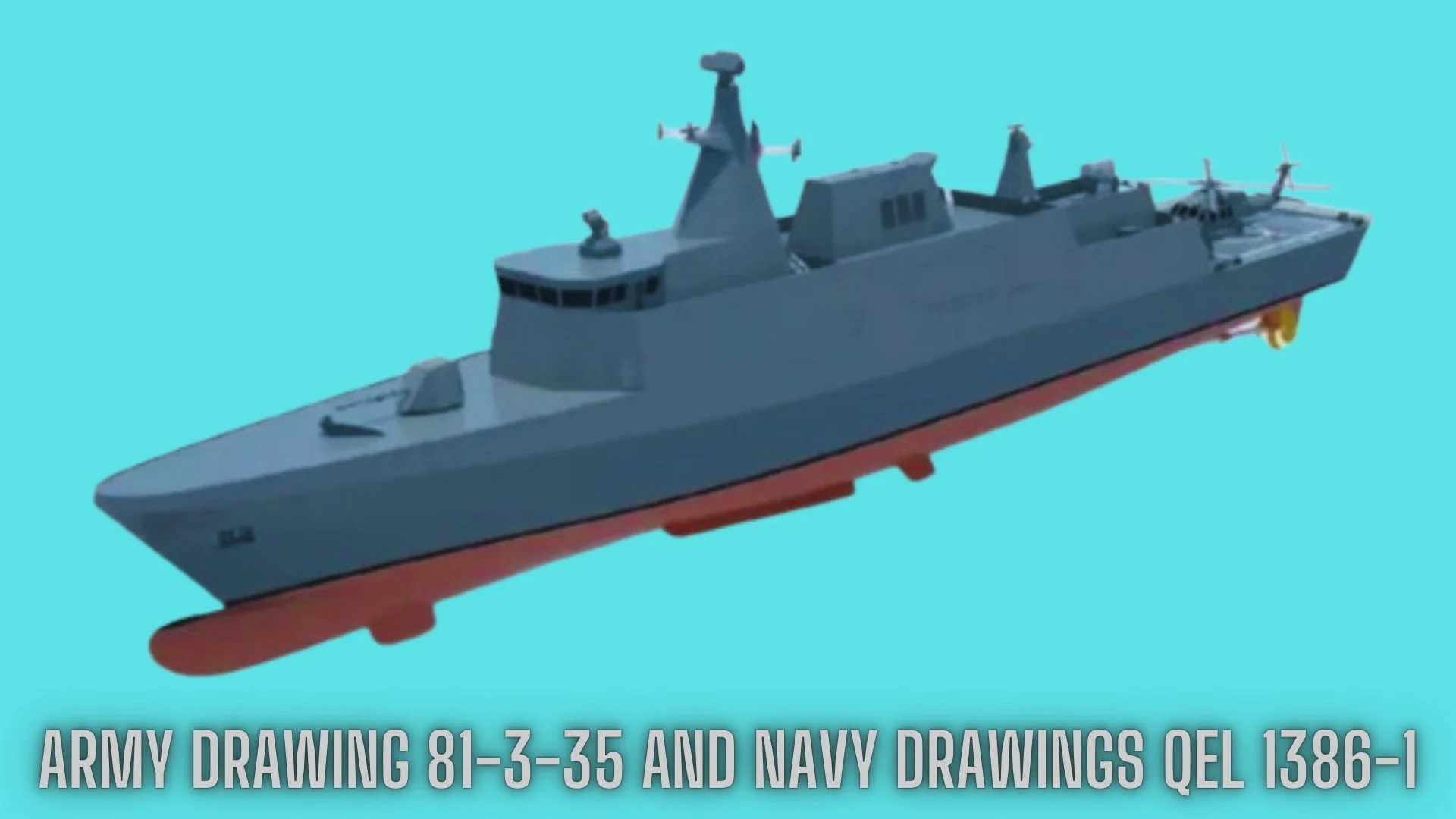The world of technical drawings and specifications in the military is highly specialized and detailed. Among the numerous blueprints and documents, two of the most critical are the Army Drawing 81-3-35 and the Navy Drawings QEL 1386-1. These documents are essential for ensuring that military-grade equipment is produced to the highest standards, ensuring operational readiness and safety for the armed forces.
In this article, we will explore the significance of Army Drawing 81-3-35 and Navy Drawings QEL 1386-1, their key features, and why they are crucial to military operations. Whether you’re a supplier, engineer, or military enthusiast, understanding these drawings can provide valuable insights into military equipment production.
What Are Army Drawing 81-3-35 and Navy Drawings QEL 1386-1?
Army Drawing 81-3-35 is a detailed technical document used by the Army to produce and maintain specific military equipment. This drawing provides intricate specifications about the components, materials, and assembly methods, ensuring the equipment meets the required operational standards.
On the other hand, Navy Drawings QEL 1386-1 is a similar document used by the Navy. It outlines the design, materials, and assembly techniques for equipment used explicitly by naval forces. Army Drawing 81-3-35 and Navy Drawings QEL 1386-1 are critical for the standardized production of military-grade equipment across various military branches.
The Importance of Army Drawing 81-3-35 and Navy Drawings QEL 1386-1 in Military Production.
The primary reason Army Drawing 81-3-35 and Navy Drawings QEL 1386-1 are crucial lies in their precision. Military equipment must be produced to exact specifications to perform reliably under extreme conditions. These drawings serve as a universal guide for manufacturers, reducing the risk of errors or inconsistencies during production.
Both documents ensure that the equipment being manufactured aligns with the military’s operational requirements, whether for land-based operations or naval missions. The accuracy in dimensions, materials, and assembly instructions provided in Army Drawing 81-3-35 and Navy Drawings QEL 1386-1 directly influences the quality and durability of the final product.
How Do Army Drawing 81-3-35 and Navy Drawings QEL 1386-1 Impact Equipment Performance?
The design and construction of military equipment require strict adherence to guidelines to maintain operational effectiveness. Army Drawing 81-3-35 ensures that the Army’s ground forces are equipped with tools and vehicles that can endure harsh environments. Navy Drawings QEL 1386-1 guarantees that naval equipment can withstand the rigors of marine conditions.
The importance of these technical documents cannot be overstated. Equipment built according to Army Drawing 81-3-35 and Navy Drawings QEL 1386-1 is more likely to be robust, durable, and effective in real-world combat or operational scenarios. Any deviations from these specifications could lead to equipment failures, jeopardizing missions or, worse, cost lives.
Key Features of Army Drawing 81-3-35 and Navy Drawings QEL 1386-1
- Detailed Specifications: Both Army Drawing 81-3-35 and Navy Drawings QEL 1386-1 contain highly detailed descriptions of the materials, dimensions, and assembly processes required to produce military equipment.
- Standardization: These drawings promote uniformity in production across various manufacturers, ensuring that every piece of equipment, whether made for the Army or Navy, meets the same high standards.
- Quality Control: By following Army Drawing 81-3-35 and Navy Drawings QEL 1386-1, manufacturers can easily maintain quality control, reducing the risk of defective or substandard equipment reaching the battlefield.
- Operational Readiness: The equipment made according to these drawings ensures that military personnel have reliable tools and machinery, which is crucial for maintaining operational readiness during critical missions.
Challenges Faced in Implementing Army Drawing 81-3-35 and Navy Drawings QEL 1386-1
Despite the importance of Army Drawing 81-3-35 and Navy Drawings QEL 1386-1, there are several challenges in their implementation:
- Complexity of Specifications: The level of detail in these drawings can sometimes pose challenges for manufacturers. Precise measurements and material specifications must be strictly followed, requiring advanced machinery and skilled labor.
- Updating Drawings: As technology evolves, military needs and equipment designs change. Keeping Army Drawing 81-3-35 and Navy Drawings QEL 1386-1 updated to reflect new requirements or innovations can be a lengthy process, leading to potential delays in production.
- Cost of Compliance: Manufacturing, according to Army Drawing 81-3-35 and Navy Drawings QEL 1386-1, can increase production costs, as materials and processes must meet stringent military standards. This can sometimes lead to higher procurement costs for the military.
The Future of Army Drawing 81-3-35 and Navy Drawings QEL 1386-1
As military operations evolve with the advancement of technology, Army Drawing 81-3-35 and Navy Drawings QEL 1386-1 will continue to play a pivotal role in the production of military-grade equipment. The need for precision, durability, and quality in military equipment will only grow, and these technical drawings ensure that the military remains prepared for any scenario.
Manufacturers and suppliers who work with the military will need to stay updated on the latest versions of Army Drawing 81-3-35 and Navy Drawings QEL 1386-1 to ensure compliance and continued production of high-quality equipment. Additionally, as new materials and manufacturing techniques emerge, these drawings may be revised further, incorporating innovations that improve equipment performance and longevity.
Conclusion
Army Drawing 81-3-35 and Navy Drawings QEL 1386-1 are indispensable tools in military equipment production. They offer a standardized guide for manufacturers, ensuring that the military receives equipment that meets the highest quality, durability, and performance standards. By adhering to these drawings, manufacturers contribute to the military’s readiness and ability to succeed in its missions.
Understanding and following Army Drawing 81-3-35 and Navy Drawings QEL 1386-1 is essential for manufacturers and anyone involved in military procurement, engineering, and logistics. These technical documents represent the foundation of military equipment production, ensuring that every tool and piece of machinery is built to withstand the demands of modern warfare.
May You Like Also: Selle Italia: Reduce Pain, Increase Power




